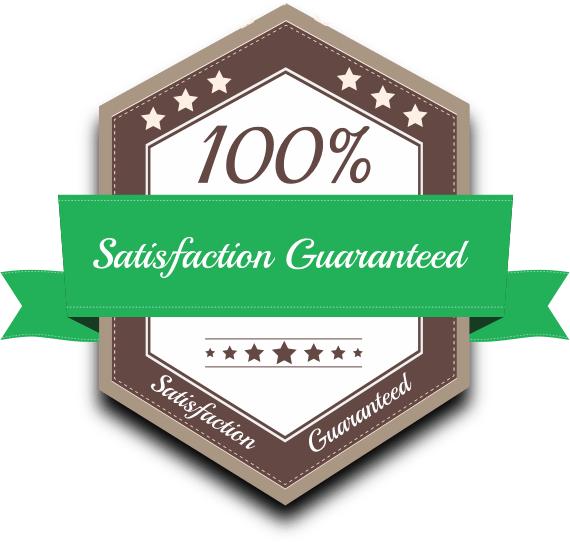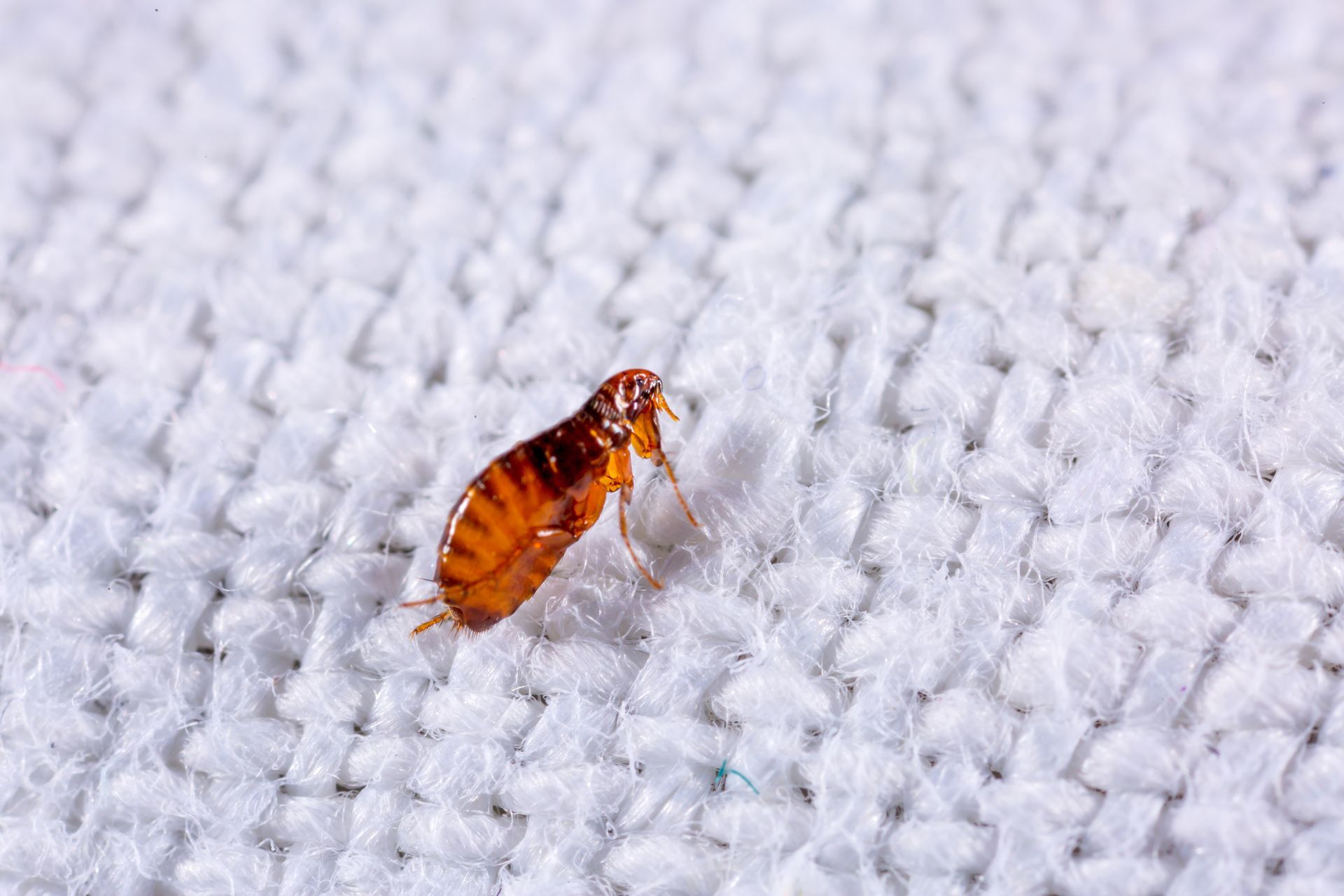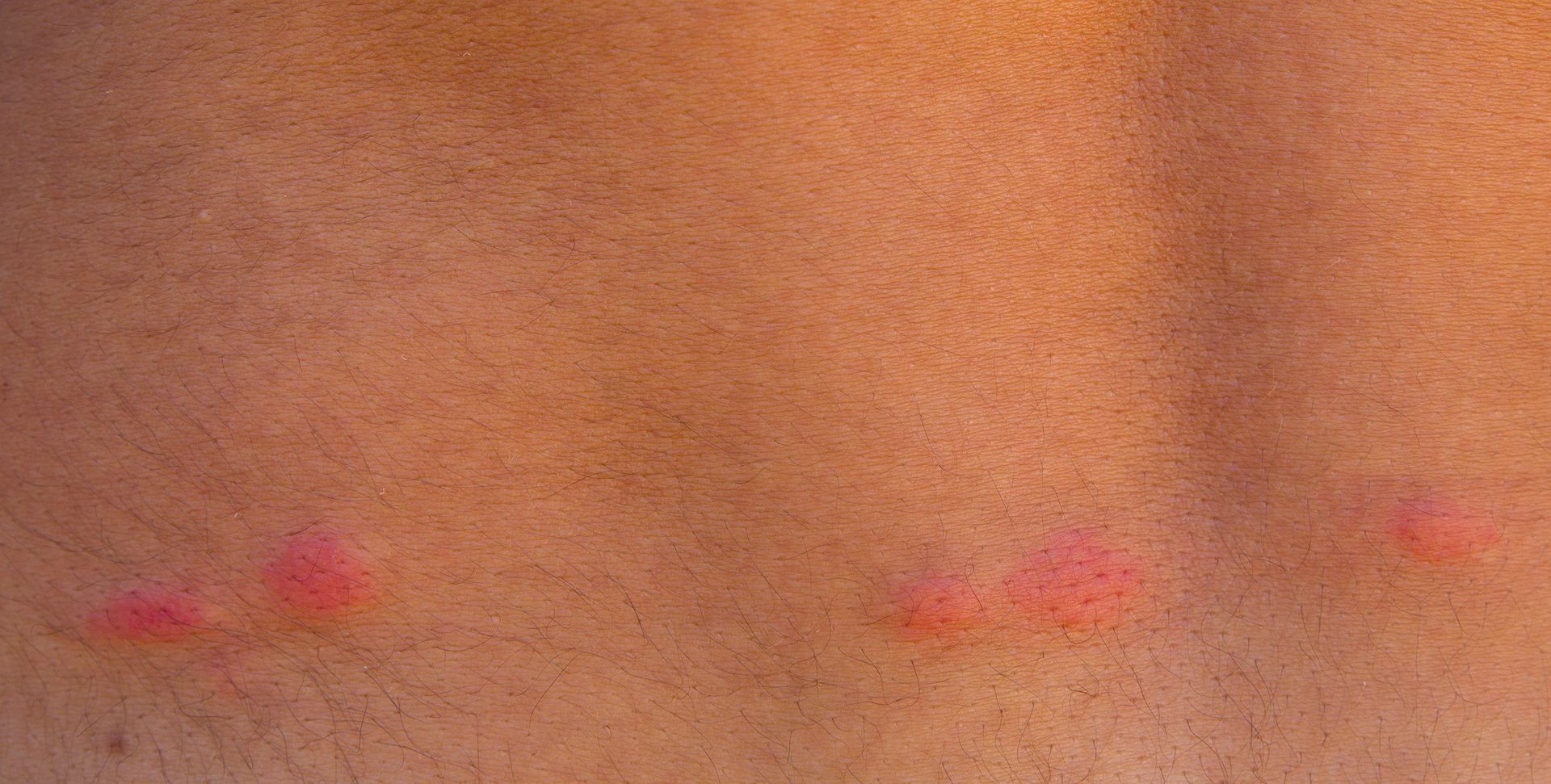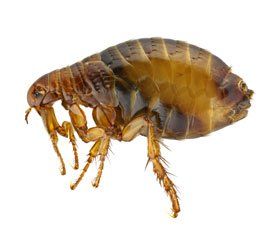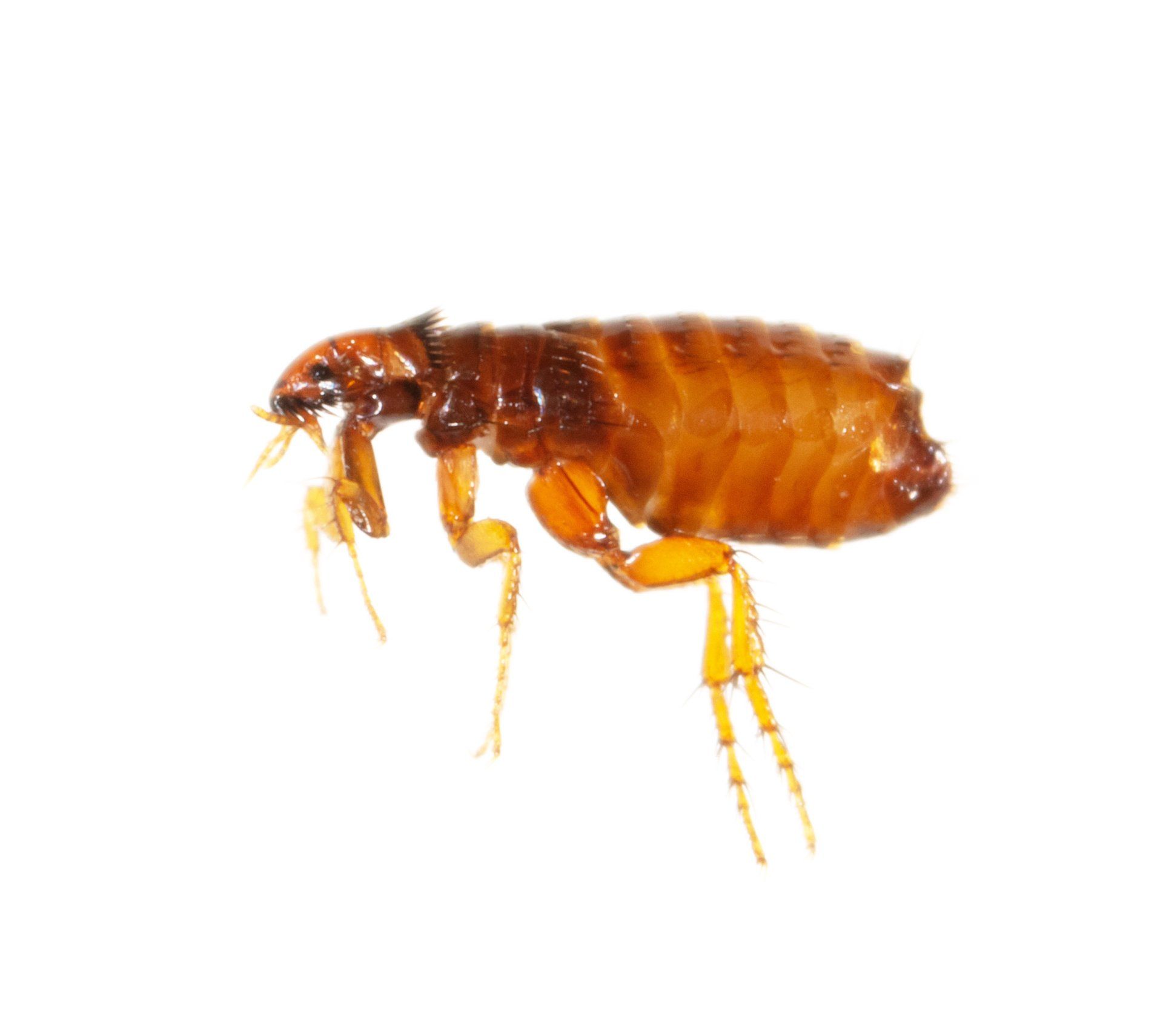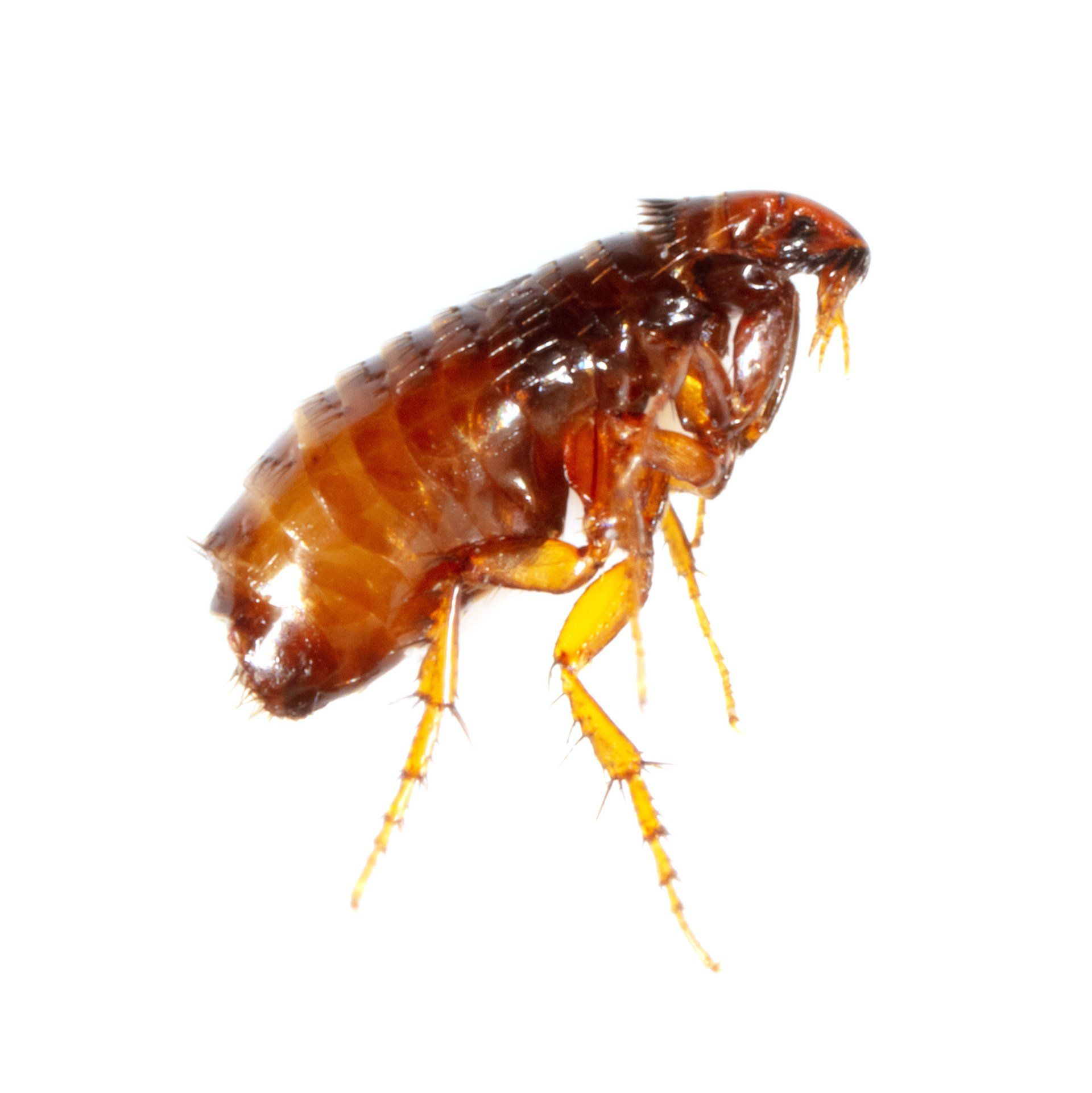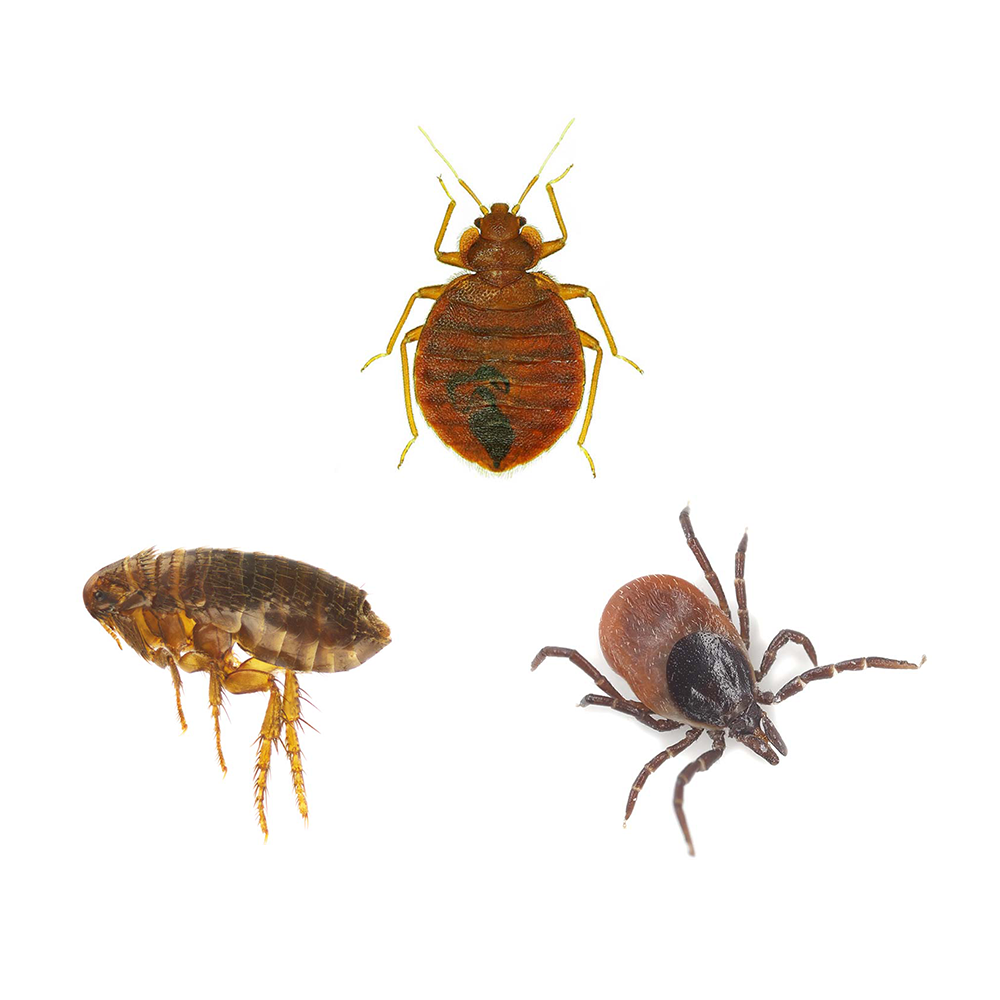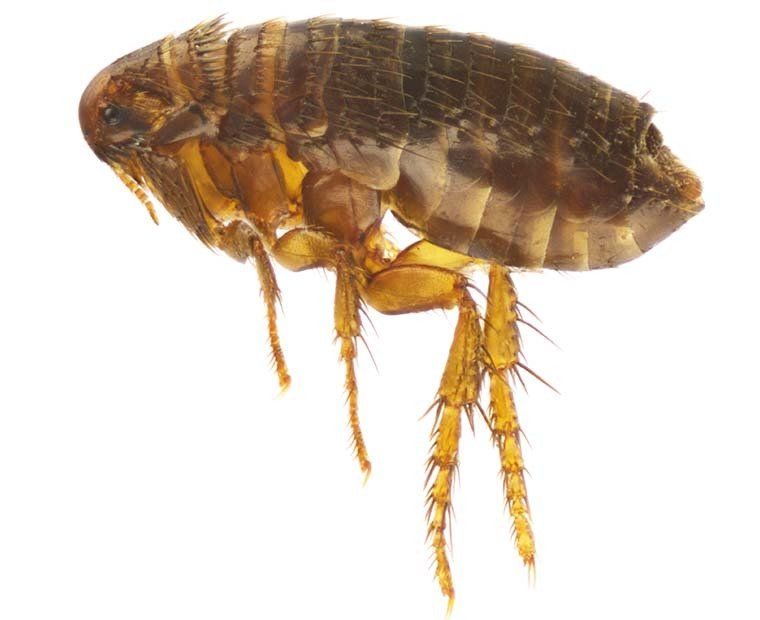Professional Flea Pest Control Treatments
When you discover the telltale signs of fleas in your home like persistent itchy bites, tiny dark insects jumping on surfaces, or pets scratching excessively, then you need immediate, professional intervention. These resilient parasites pose serious risks to both family and pets. At EcoGuard Pest Management, we deliver targeted solutions to eliminate flea infestations and prevent future invasions through our science based approach to flea pest control.
Call today for a free estimate 866-326-2847
Pest FREE Guarantee
All Natural Services
Licensed & Insured
Competitive Pricing
Flea Control Experts
Fleas are among the most persistent and resilient pests challenging property owners today. Our technicians receive specialized training in flea biology and behavior patterns which enables them to effectively target these pests throughout all four life stages. This expertise allows us to implement comprehensive control strategies that account for fleas' complex life cycle and environmental preferences, ensuring more effective and lasting results than generic pest control approaches.
Why Fleas Are a Serious Problem
Fleas create unique challenges that demand immediate professional attention due to their combination of health risks and resilient nature:
- These parasites feed on blood from humans and pets, causing irritating bites that can trigger severe allergic reactions and secondary skin infections in sensitive individuals
- A single female flea can produce up to 50 eggs daily and 2,000 in her lifetime, with eggs developing into adults in as little as 21 days under ideal conditions, leading to rapidly escalating infestations
- Fleas can transmit diseases including typhus, bartonellosis (cat scratch disease), and tapeworms, while also acting as vectors for other dangerous pathogens
- Their complex life cycle includes four distinct stages (egg, larva, pupa, adult), with pupae capable of remaining dormant for months before emerging when environmental conditions are favorable, making complete elimination challenging
EcoGuard Flea Treatment Options
Our comprehensive approach to flea pest control combines multiple strategies tailored to your specific situation:
- Multi-Stage Treatment: We implement specialized treatments targeting all four life stages of fleas including adults, eggs, larvae, and pupae, since each requires different control methods
- Indoor Environment Treatment: Our thorough interior treatments focus on areas where fleas concentrate, including carpets, furniture, baseboards, and pet resting areas
- Adulticide Application: We use professional grade adulticides for immediate relief, quickly killing fleas that are actively biting and reproducing
- Growth Regulator Technology: Our treatments include specialized insect growth regulators (IGRs) that prevent flea eggs and larvae from developing into adults, breaking the reproductive cycle
- Exterior Perimeter Control: Professional grade treatments create a barrier around your home to prevent new flea populations from establishing in your yard
- Microcapsule Technology: We apply advanced microencapsulated insecticides that provide extended residual control, releasing active ingredients gradually to kill emerging fleas for weeks after application
What Causes Flea Problems?
Understanding the factors that contribute to flea infestations is essential for effective control:
- Animal Hosts: While pets like cats and dogs are common carriers, fleas also hitchhike on wildlife such as raccoons, opossums, and rodents that may visit your property
- Favorable Environments: Fleas thrive in warm (70-85°F), humid (50-90% humidity) conditions, making certain seasons and indoor environments particularly hospitable
- Protected Outdoor Areas: Shaded, undisturbed areas with organic debris provide ideal breeding grounds for flea larvae, which feed on organic matter like pet feces and food particles
- Pre-existing Conditions: Purchasing a new home or moving into a rental property where previous occupants had pets can lead to "inheritance" of dormant flea pupae that activate with new vibrations and warmth
Signs of a Flea Infestation
Learn to recognize these distinctive signs that indicate flea activity in your property:
- Small, dark jumping insects: They are 1/16 to 1/8 inch in size and jump high and move quickly, particularly visible on light colored surfaces and socks
- "Flea dirt": This is the digested blood excrement that appears as tiny black specks on pet bedding, carpets, or when combing pets with a fine toothed flea comb
- Consistent, grouped bites: Can appear on human skin, typically found on ankles and lower legs, often in sets of three
- Pet irritation: This can result in scratching, biting, or licking excessively, especially at the base of the tail, groin, and neck areas
- Hair loss: This followed by scabs or irritated skin on pets resulting from flea allergic dermatitis
- Flea eggs: Small white or pearl colored oval eggs and tiny, worm like larvae in pet bedding, carpet fibers, or furniture crevices
DIY vs Professional Treatment
While retailers offer various flea control products, DIY approaches often fall short of providing lasting relief from flea infestations. Store bought sprays and treatments may eliminate some adult fleas but fail to address eggs, larvae, and pupae which make up 95% of the total flea population. Additionally, improper application of flea products can create health risks for family members and pets while allowing surviving fleas to reproduce and perpetuate the infestation.
Professional flea control services provide comprehensive solutions that DIY methods cannot match. Our flea exterminators possess expert understanding of the complete flea life cycle and required treatment timing, along with access to commercial grade insecticides and insect growth regulators not available to consumers. We implement proven preventive measures specifically targeting pet areas and outdoor sources while employing safe application methods that protect your family throughout the process. Our strategic follow up treatments are precisely timed to break the flea reproductive cycle, ensuring complete elimination rather than temporary relief.
Commercial Flea Control
EcoGuard Pest Management delivers specialized flea control programs for businesses that are designed to eliminate these persistent pests while maintaining operational efficiency and customer comfort. Our commercial services address the unique challenges fleas present in different business environments through customized treatment protocols.
We provide expert flea control solutions for:
- Veterinary clinics and animal boarding facilities
- Hotels and hospitality venues
- Multi-unit residential properties
- Daycares and educational facilities
- Healthcare institutions
- Office complexes
- Retail establishments
- Restaurants and food service operations
- Animal shelters and adoption centers
- Pet grooming and retail stores
For immediate service for all of your flea control concerns please call 866-326-2847 or complete this form.
EcoGuard Flea Guarantee
We understand the persistent nature of flea infestations and back our services with a comprehensive guarantee. If fleas return to treated areas during your service period, we'll return at no additional cost to address the problem. Our commitment extends beyond initial control to ensure lasting protection through:
- Strategic follow up treatments timed to the flea life cycle
- Environmental monitoring for conditions favorable to fleas
- Seasonal adjustments to control strategies
- Prompt response to any new flea activity
Flea Pest Control Process
Thorough Inspection - Our flea exterminators conduct detailed property assessments to identify the extent of the infestation, locate primary harborage areas, and determine contributing factors. This includes examining both interior and exterior areas with special attention to pet resting areas, carpeting, furniture, and yard environments.
Customized Treatment - Based on inspection findings, we develop and implement a targeted control strategy combining appropriate insecticides, insect growth regulators, and environmental modifications suited to your specific situation and the stage of the infestation.
Exclusion - We provide practical guidance on reducing wildlife access to your property, as many flea infestations originate from wild animals visiting yards and exterior spaces, particularly for households without pets.
Ongoing Monitoring - Regular service visits maintain control through strategic retreatment, inspection of previously affected areas, and monitoring of potential new sources, with adjustments made as needed to ensure complete elimination.
Seasonal Plan for Flea Control
Spring: As temperatures warm, we implement preventive measures before the flea season intensifies. Focus on treating emerging outdoor populations, pet protection strategies, and early indoor treatments that are designed for preventing flea establishment.
Summer: Peak flea season requires aggressive control measures. Increase treatment frequency in outdoor areas, maintain vigilant pet treatment, and implement comprehensive indoor treatments targeting all stages of development during this period of maximum activity.
Fall: Address outdoor harborage areas where fleas seek shelter from cooling temperatures. Conduct thorough indoor treatments to eliminate populations before they establish winter breeding cycles in heated indoor environments.
Winter: Even in colder months, indoor flea populations can thrive. Maintain indoor treatment protocols, focusing on pet areas, heating vents, and baseboards where fleas and their eggs concentrate in the warmer indoor environment.
Flea Control FAQs
How can I tell if my home has a flea infestation rather than other similar pests?
Fleas are distinguished by their ability to jump high and quickly, their small dark bodies (1/16-1/8 inch long), and tendency to bite around ankles and legs. Other signs include "flea dirt" (dark excrement) in pet bedding and tiny white eggs in carpet fibers. Unlike bed bugs, fleas are active during daytime and will jump visibly when disturbed.
Why might I have fleas in my home even if I don't have pets?
Previous occupants may have had pets that left behind dormant flea pupae, which can remain viable for months. Wildlife like raccoons, opossums, or rodents may also visit your yard, leaving fleas behind. Additionally, fleas can hitchhike on clothing from infested environments you've visited.
How quickly can a minor flea problem escalate into a full infestation?
Extremely quickly. A single female flea can lay up to 50 eggs daily, and the entire life cycle from egg to reproductive adult can complete in just 21 days under ideal conditions. This means a few fleas can multiply into thousands within a month if left untreated.
What methods do professional flea control services use that over the counter products don't offer?
Professional services utilize commercial grade insecticides combined with insect growth regulators that specifically target different life stages. We also have access to specialized application equipment that ensures thorough coverage in hard to reach areas where fleas hide and breed.
How do professional services target fleas at different life cycle stages?
We implement a multi-pronged approach: adulticides to eliminate fleas, insect growth regulators to prevent eggs and larvae from developing, specialized treatments for pupae in carpet fibers and cracks, and strategic timing of follow up treatments to break the reproductive cycle.
Are the treatments used by professional flea services safe for my family, children, and pets?
Our treatments use EPA approved products applied by licensed professionals following strict safety protocols. We provide clear guidance on temporary evacuation periods and when it's safe to return. Our methods prioritize both effectiveness and the safety of your household members.
How long does a typical professional flea treatment process take from start to finish?
The initial treatment typically takes 2-3 hours, depending on your home's size. Complete elimination usually requires 2-3 treatments spaced 10-14 days apart to address all life stages, with the entire process spanning approximately 30 days for severe infestations.
What areas of my home will professionals focus on during a flea treatment?
We focus on carpeted areas, furniture, pet bedding, baseboards, cracks and crevices, underneath furniture, closet floors, and other areas where fleas and their eggs concentrate. Outdoor treatments target shaded areas, pet resting spots, and under decks or porches.
After professional treatment, how soon will I notice a reduction in flea activity?
Adult flea activity typically decreases significantly within 24-48 hours after initial treatment. However, as pupae continue to emerge (being resistant to most insecticides), you may notice some activity for 7-14 days, which is why follow up treatments are essential.
What makes professional flea control more effective than DIY approaches?
Professional control combines multiple treatment methods, targets all life stages simultaneously, includes strategic follow up timing, and addresses environmental factors. We also identify and treat hidden harborage areas most homeowners overlook during DIY attempts.
How many treatments are typically required to completely eliminate a flea infestation?
Most infestations require 2-3 treatments spaced 10-14 days apart to break the life cycle effectively. Severe or long established infestations may require additional treatments, particularly if environmental conditions favor rapid reproduction.
Do flea control services typically offer warranties or guarantees on their treatments?
EcoGuard provides a comprehensive service guarantee. If fleas persist after our recommended treatment plan, we'll return at no additional cost to retreat until the problem is resolved, provided you've followed all preparation and prevention recommendations.
What preparation is required before a professional flea treatment appointment?
We provide a detailed checklist, but key preparations include vacuuming thoroughly, washing all pet bedding, clearing floor areas, removing pets during application, and having pets treated by a veterinarian simultaneously to prevent reinfestation.
How do professional services get rid of fleas and prevent them from returning after treatment?
We implement a comprehensive approach including residual treatments that continue working for weeks, insect growth regulators that prevent reproduction, environmental modifications to reduce flea friendly conditions, and guidance on ongoing pet protection.
What time of year are flea infestations most common and when should I schedule service?
Flea activity peaks during warm, humid months (typically May through October in most regions). However, with central heating, indoor infestations can persist year round. Preventive treatments are most effective when scheduled in early spring before peak season.
Can professional flea services treat my yard and outdoor areas in addition to my home?
Absolutely. Our comprehensive treatment programs include targeted outdoor applications focusing on shaded areas, pet resting spots, and wildlife entry points. Treating outdoor areas is crucial for preventing reinfestation, especially during warmer months.
What should I expect to pay for professional flea control services?
The exact cost depends on factors like infestation severity, property size, and required follow up treatments, with larger properties or severe infestations potentially requiring more extensive treatment programs.
How do professionals determine the source of a flea infestation?
We conduct thorough inspections looking for flea dirt, eggs, and adults while evaluating pet behavior, wildlife activity around your property, and environmental conditions. Understanding the source helps us tailor treatment strategies to prevent recurrence.
What health risks do fleas pose that professional services can help address?
Beyond irritating bites, fleas can transmit diseases including typhus, bartonellosis (cat scratch disease), and tapeworms. They can cause severe allergic reactions (flea allergy dermatitis) in both people and pets, and their bites can lead to secondary skin infections.
How soon after professional treatment can my pets return to treated areas?
Most treated areas are safe for pets to access after the products have dried completely, typically 2-4 hours following application. However, for maximum effectiveness, we recommend keeping pets treated with veterinary flea control and limiting their access to certain areas for 24 hours.
What pest control is best for fleas?
The most effective flea control combines multiple treatment approaches rather than relying on a single product or method. The best professional services will use a combination of fast-acting adulticides, IGRs for long-term prevention, and microencapsulated products for extended protection. Companies that offer guaranteed follow-up treatments are typically best, as complete flea elimination usually requires multiple treatments spaced 10-14 days apart to break the life cycle. Look for pest control companies that specifically highlight their flea treatment expertise and understand the importance of targeting all four life stages.
How do you control fleas?
Effective flea control requires a multi-faceted approach. For homeowners, this includes regularly treating pets with veterinarian-recommended flea preventatives, frequent vacuuming (especially pet areas, under furniture, and along baseboards), washing pet bedding in hot water weekly, and maintaining yard areas by keeping grass short and removing organic debris. For lasting control, professional treatment is recommended, as they can apply commercial-grade products that target all flea life stages and provide advice on environmental modifications to prevent flea reinfestation. The key to successful control is persistence and addressing both the environment and any pets simultaneously.
What kind of fleas might be in my house?
The most common type found in homes is the cat flea (Ctenocephalides felis), which despite its name, infests both cats and dogs as well as various wildlife that may visit your property. In some regions, you might also encounter dog fleas (Ctenocephalides canis) or human fleas (Pulex irritans), though these are less common in domestic settings. All species can bite humans and cause similar problems, requiring the same professional treatment approaches regardless of the specific flea type.
Additional Flea Resources
Additional Pest Commonly Treated
See our Pest Library for a full list of insects we treat for. If you don’t see what you are looking for give us a call. We are always here to help! EcoGuard Pest Management provides eco-friendly services for both residential and commercial properties.
Why Choose EcoGuard?
- A pest free guarantee
- Green & ecofriendly pesticides that are state approved
- Licensed, bonded, and insured services
- Competitive pricing



